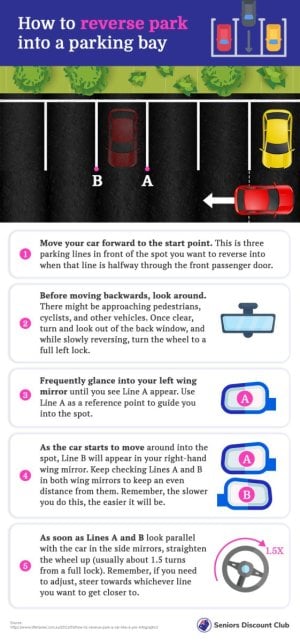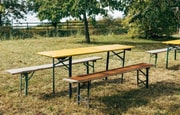Tips for Aussie Drivers: Why Reverse Parking is the Smarter Choice
- Replies 27
Are you one of those drivers who just drives straight into a parking spot without giving it a second thought? Well, an expert advises that you might want to start reversing into those spots, especially if you're parking in a shopping centre car park.
Think about it, when you're driving around a busy car park, there are so many obstacles to watch out for, such as trolleys, prams, and other cars. Now add a bunch of excited kids running around to the mix, and you've got yourself a recipe for disaster.
But by reversing into your spot, you have a better view of your surroundings, which means you're less likely to hit anything or anyone.
Ben Ward, the owner of Coastwide Driving School, is a driving expert who knows a thing or two about safe driving. He recently spoke about the benefits of reversing into your parking spot on a radio program, and according to him, not only is it safer, but it's also more convenient.
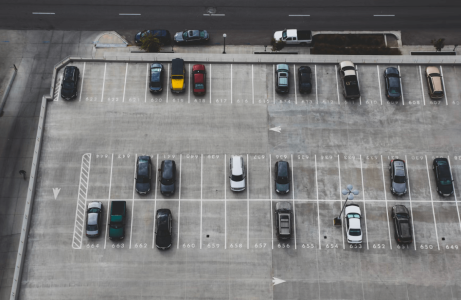
Sure, it might take a bit longer to reverse into your spot than to drive straight in but think about how much time you'll save when it's time to leave.
Mr Ward explained that reversing out of a spot can be tricky, especially if you're parked next to another car or if there's a lot of traffic. But if you're already facing forward, it's much easier to merge back into traffic and get on with your day.
According to the Driver Knowledge Test, an online resource offering free practice questions for people taking their driving exams, reverse parking is safer for pedestrians and cyclists.
'When reversing out of a car park, you often have to reverse more than halfway out before you can see both ways,' their website reads. 'When driving out forwards, you have to come forward no more than a third of your car length.'
When you reverse into a parking spot, you have a better view of your surroundings, which means you're less likely to hit someone walking or cycling past your car.
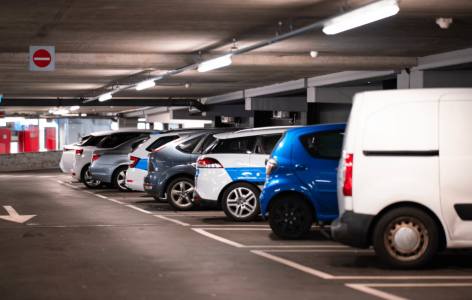
However, that's not to say that forward parking isn't ever the right option. Peter Khoury, a spokesperson for the National Roads and Motorists' Association (NRMA) said that while reversing is often the better and safer idea, it's important you use 'common sense' too.
'It's important that you're comfortable and confident doing both — nose in and rear in first. But it is easier to get out of your parking spot going in the rear first, but then make sure you leave enough room to get your groceries in the boot.'
But he also advises that if reverse parking makes it harder to access your boot and load up your groceries, then driving straight in might be the best option.
Regardless of which option you choose, it's important to stay focused and be aware of your surroundings. Tara McCarthy, Deputy Secretary for Safety, Environment and Regulation division at Transport NSW.
'Each on-road situation is different,' she said. 'No matter how you choose to park – reverse, angle, or front in – please be safe and look out for pedestrians, children and other vehicles.'

So there you have it, folks! Whether you choose to reverse park or drive straight in, the most important thing is to be aware of your surroundings and use your common sense. By doing so, you'll not only be keeping yourself safe, but you'll also be doing your part to keep others safe on the road.
The next time you're at the shops, take a moment to think about how you're parking your car. Sure, it might seem like a small thing, but it could make all the difference when it comes to safety and convenience. And who knows, you might even impress your passengers with your reverse parking skills!
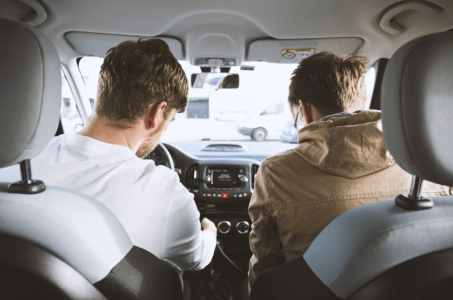
Not sure how to reverse park into a spot? Don't worry, here's a helpful guide:
1. Find a good parking spot.
To make parking less stressful, it's best to find a good spot that's not sandwiched between two other cars. While this may not always be possible in a crowded parking garage, if you can park next to only one car instead of two, it will be a lot easier and less nerve-wracking.
2. Flip on your indicator.
Turn on your indicator in the direction of the spot you want to back into. This, along with the reverse lights, lets anyone behind you know that you're planning to reverse and park in that empty spot you just passed.
3. Drive two spots past the spot where you want to park.
Adjust your car so that the outside line of the second spot lines up with your rearview mirror. This line is also the third line from the spot where you want to park. To count, simply start from the line between the spot you want to park in and the one next to it. This third line will help you know how far to pull your car forward to turn in perfectly. By following this, you'll have a visual reference to help you park your car with ease.
4. Turn your wheel in the direction of the parking spot until it locks.
If the parking spot is on your right, you'll need to turn the steering wheel to the right. Alternatively, if the parking spot is on your left, you'll need to turn the steering wheel to the left. After that, shift your car into reverse.
5. Turn your head to see where you're going as you reverse.
It's essential to glance in all directions, particularly in busy parking lots. Even if your car has a backup camera, it's still important to look in the direction your car is moving. If you get too close to nearby cars, stop immediately. Then, pull your car forward a little bit and turn your steering wheel slightly in the opposite direction (away from the parking spot) to give yourself some space. Once you've done that, you can continue reversing.
6. Straighten your wheel to finish backing into the spot.
Continue backing up until your rear bumper gets halfway into the spot. Then, move slowly so you can tell when your rear tires are parallel in the spot—that's when you need to straighten the wheels out.
7. Move straight back to the end of the spot.
Slowly reverse your car while keeping your wheels straight until you're completely in the spot. Finally, look ahead to the lines marking the parking spaces. Your car is in the right position when the front bumper is aligned with the ends of those lines.
8. Open your door or stick your head out the window to see where the line is.
To ensure that you're parked correctly, open your car door or stick your head out the window to see where the line is. If you're too close to one side, you might not be able to open your car door when you return. If your car is slightly crooked or over the line, don't worry! Simply pull forward and adjust your angle to back in straight.
9. Put your car in park and turn it off.
After parking your car, put the gear in park and turn off the engine. Before leaving your car, engage the parking brake to prevent it from rolling. Finally, take out the keys and open the door slowly, being careful not to slam it into the car next to you.
You can also use this infographic we made below as a guide:
We hope this article has provided you with valuable information on the benefits and considerations of both reverse parking and driving straight in.
Now we would like to hear from you, members! What do you think? Do you prefer the convenience of driving straight in, or do you believe that reverse parking is the safer option? Let us know your thoughts in the comments below!
Think about it, when you're driving around a busy car park, there are so many obstacles to watch out for, such as trolleys, prams, and other cars. Now add a bunch of excited kids running around to the mix, and you've got yourself a recipe for disaster.
But by reversing into your spot, you have a better view of your surroundings, which means you're less likely to hit anything or anyone.
Ben Ward, the owner of Coastwide Driving School, is a driving expert who knows a thing or two about safe driving. He recently spoke about the benefits of reversing into your parking spot on a radio program, and according to him, not only is it safer, but it's also more convenient.

There are so many things to think about behind the wheel, and parking can often be a tricky situation. Credit: Unsplash/John Matychuk.
Sure, it might take a bit longer to reverse into your spot than to drive straight in but think about how much time you'll save when it's time to leave.
Mr Ward explained that reversing out of a spot can be tricky, especially if you're parked next to another car or if there's a lot of traffic. But if you're already facing forward, it's much easier to merge back into traffic and get on with your day.
According to the Driver Knowledge Test, an online resource offering free practice questions for people taking their driving exams, reverse parking is safer for pedestrians and cyclists.
'When reversing out of a car park, you often have to reverse more than halfway out before you can see both ways,' their website reads. 'When driving out forwards, you have to come forward no more than a third of your car length.'
When you reverse into a parking spot, you have a better view of your surroundings, which means you're less likely to hit someone walking or cycling past your car.

The best way to park is whatever way is safest for you, your vehicle, and the people and objects around you. Credit: Unsplash/Michael Fousert.
However, that's not to say that forward parking isn't ever the right option. Peter Khoury, a spokesperson for the National Roads and Motorists' Association (NRMA) said that while reversing is often the better and safer idea, it's important you use 'common sense' too.
'It's important that you're comfortable and confident doing both — nose in and rear in first. But it is easier to get out of your parking spot going in the rear first, but then make sure you leave enough room to get your groceries in the boot.'
But he also advises that if reverse parking makes it harder to access your boot and load up your groceries, then driving straight in might be the best option.
Regardless of which option you choose, it's important to stay focused and be aware of your surroundings. Tara McCarthy, Deputy Secretary for Safety, Environment and Regulation division at Transport NSW.
'Each on-road situation is different,' she said. 'No matter how you choose to park – reverse, angle, or front in – please be safe and look out for pedestrians, children and other vehicles.'
Key Takeaways
- Ben Ward, the owner of Coastwide Driving School, recommends drivers should aim to reverse park always. The reason is twofold, he said: convenience and safety.
- Peter Khoury, a spokesperson for NRMA said drivers should use 'common sense' when deciding whether to reverse park or not.
- Tara McCarthy, Deputy Secretary for Safety, Environment and Regulation division at Transport NSW said staying focused and aware of your surroundings is paramount when driving, no matter how you choose to park.
So there you have it, folks! Whether you choose to reverse park or drive straight in, the most important thing is to be aware of your surroundings and use your common sense. By doing so, you'll not only be keeping yourself safe, but you'll also be doing your part to keep others safe on the road.
The next time you're at the shops, take a moment to think about how you're parking your car. Sure, it might seem like a small thing, but it could make all the difference when it comes to safety and convenience. And who knows, you might even impress your passengers with your reverse parking skills!

While it might take you a little practice, reverse parking is a pretty simple skill to master. Credit: Unsplash/David Emrich.
Not sure how to reverse park into a spot? Don't worry, here's a helpful guide:
1. Find a good parking spot.
To make parking less stressful, it's best to find a good spot that's not sandwiched between two other cars. While this may not always be possible in a crowded parking garage, if you can park next to only one car instead of two, it will be a lot easier and less nerve-wracking.
2. Flip on your indicator.
Turn on your indicator in the direction of the spot you want to back into. This, along with the reverse lights, lets anyone behind you know that you're planning to reverse and park in that empty spot you just passed.
3. Drive two spots past the spot where you want to park.
Adjust your car so that the outside line of the second spot lines up with your rearview mirror. This line is also the third line from the spot where you want to park. To count, simply start from the line between the spot you want to park in and the one next to it. This third line will help you know how far to pull your car forward to turn in perfectly. By following this, you'll have a visual reference to help you park your car with ease.
4. Turn your wheel in the direction of the parking spot until it locks.
If the parking spot is on your right, you'll need to turn the steering wheel to the right. Alternatively, if the parking spot is on your left, you'll need to turn the steering wheel to the left. After that, shift your car into reverse.
5. Turn your head to see where you're going as you reverse.
It's essential to glance in all directions, particularly in busy parking lots. Even if your car has a backup camera, it's still important to look in the direction your car is moving. If you get too close to nearby cars, stop immediately. Then, pull your car forward a little bit and turn your steering wheel slightly in the opposite direction (away from the parking spot) to give yourself some space. Once you've done that, you can continue reversing.
6. Straighten your wheel to finish backing into the spot.
Continue backing up until your rear bumper gets halfway into the spot. Then, move slowly so you can tell when your rear tires are parallel in the spot—that's when you need to straighten the wheels out.
7. Move straight back to the end of the spot.
Slowly reverse your car while keeping your wheels straight until you're completely in the spot. Finally, look ahead to the lines marking the parking spaces. Your car is in the right position when the front bumper is aligned with the ends of those lines.
8. Open your door or stick your head out the window to see where the line is.
To ensure that you're parked correctly, open your car door or stick your head out the window to see where the line is. If you're too close to one side, you might not be able to open your car door when you return. If your car is slightly crooked or over the line, don't worry! Simply pull forward and adjust your angle to back in straight.
9. Put your car in park and turn it off.
After parking your car, put the gear in park and turn off the engine. Before leaving your car, engage the parking brake to prevent it from rolling. Finally, take out the keys and open the door slowly, being careful not to slam it into the car next to you.
You can also use this infographic we made below as a guide:
We hope this article has provided you with valuable information on the benefits and considerations of both reverse parking and driving straight in.
Now we would like to hear from you, members! What do you think? Do you prefer the convenience of driving straight in, or do you believe that reverse parking is the safer option? Let us know your thoughts in the comments below!

